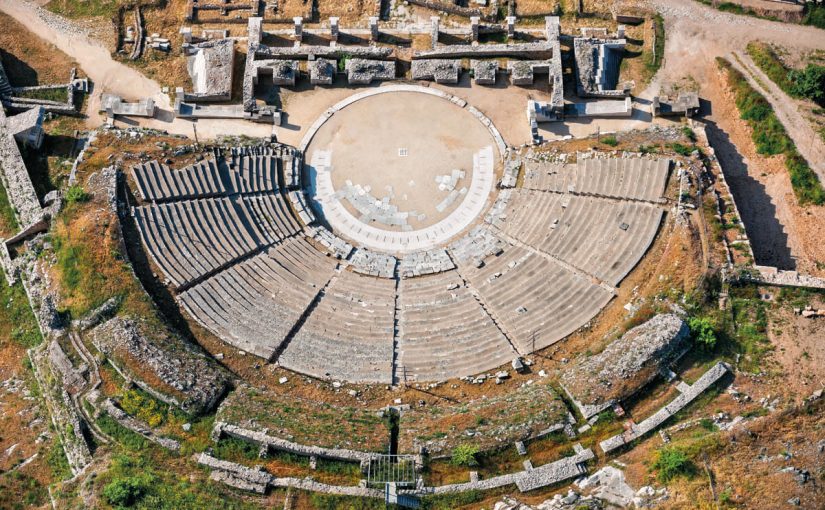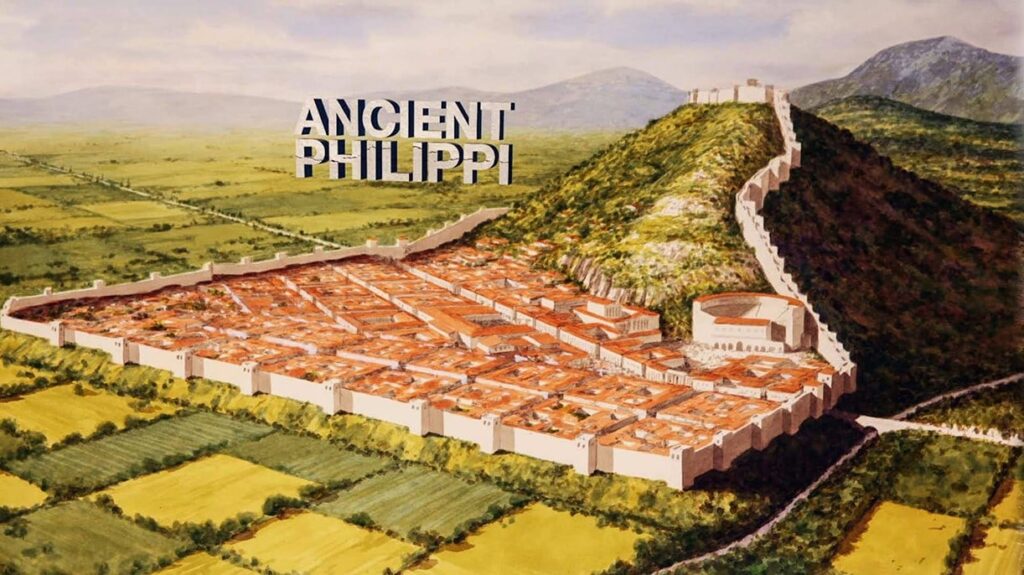Archaeological Site of Philippi
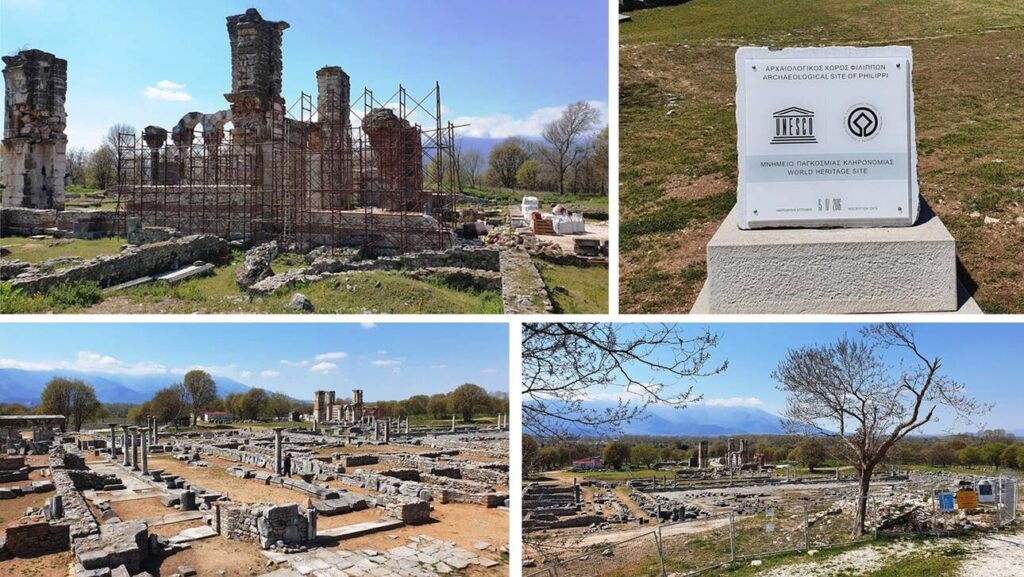
The remains of this walled city lie at the foot of an acropolis in north-eastern Greece, on the ancient route linking Europe and Asia, the Via Egnatia. Founded in 356 BC by the Macedonian King Philip II, the city developed as a “small Rome” with the establishment of the Roman Empire in the decades following the Battle of Philippi, in 42 BCE. The vibrant Hellenistic city of Philip II, of which the walls and their gates, the theatre and the funerary heroon (temple) are to be seen, was supplemented with Roman public buildings such as the Forum and a monumental terrace with temples to its north. Later the city became a centre of the Christian faith following the visit of the Apostle Paul in 49-50 CE. The remains of its basilicas constitute an exceptional testimony to the early establishment of Christianity.

Outstanding Universal Value
Brief synthesis
The Archaeological Site of Philippi is lying at the foot of an acropolis in north-eastern Greece on the ancient route linking Europe with Asia, the Via Egnatia. The city of Philippi, re-founded by Philip II on a former colony of Thasians in 356 BCE, was reshaped by the Romans into a “small Rome” with its elevation to a Colonia Augusta of the Roman Empire in the decades following the Battle of Philippi. The vibrant Hellenistic city of Philip II, of which the walls and their gates, the theatre and the funerary heroon (temple) are to be seen, was adorned and transformed with Roman public buildings including the Forum and a monumental terrace with temples to its north. Later the city became a centre of Christian faith and pilgrimage deriving from the visit of the Apostle Paul in 49/50 CE and the remains of Christian basilicas and the octagonal church testify to its importance as a metropolitan see.
Criterion (iii): Philippi is an exceptional testimony to the incorporation of regions into the Roman Empire as demonstrated by the city’s layout and architecture as a colony resembling a “small Rome”. The remains of its churches are exceptional testimony to the early establishment and growth of Christianity.
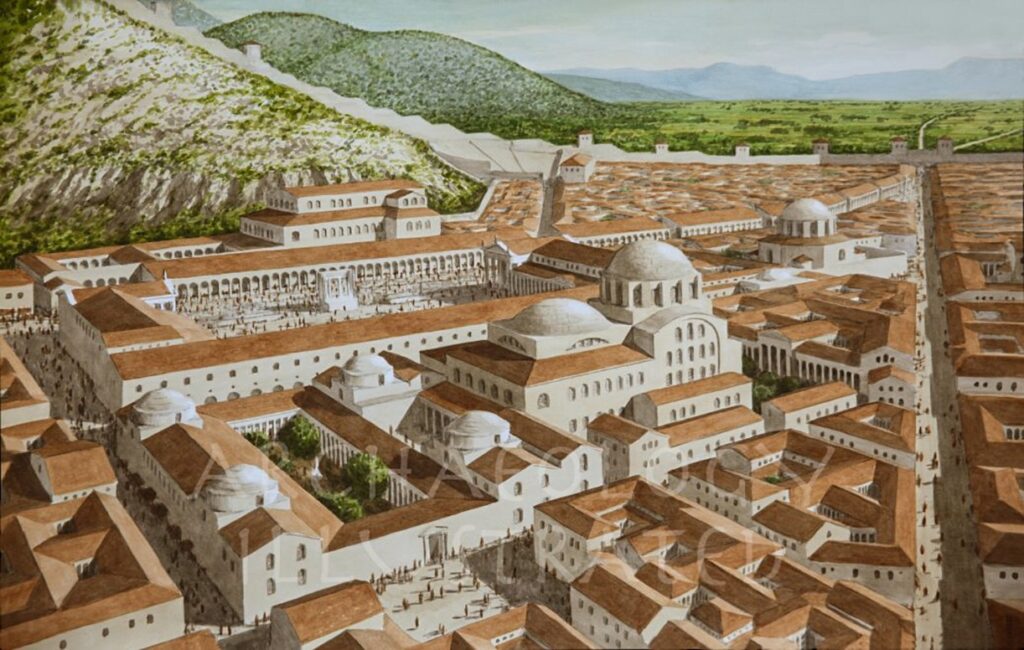
Criterion (iv): The monuments of Philippi exemplify various architectural types and reflect the development of architecture during the Roman and Early Christian period. The Forum stands out as an example of such a public space in the eastern Roman provinces. The Octagon Church, the transept Basilica, and the domed Basilica stand out as types of Early Christian architecture.
Integrity
The walled city includes all elements necessary to convey its values, and is not subject to development or neglect. The modern asphalted road, closed in 2014, which essentially follows the route of the ancient Via Egnatia, will be dismantled east of the west entrance to the site near the Museum.
Authenticity
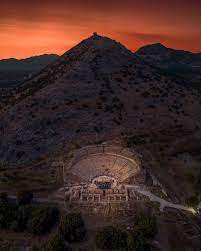
The walled city was subject to major destruction in the earthquake of 620 CE. Many stones and elements of the buildings including inscriptions and mosaic and opus sectile floors remain in situ from that time, although some stones were subsequently reused in later buildings. Modern constructions and interventions at the site have been generally limited to archaeological investigations and necessary measures for the protection and enhancement of the site. For the most part the principle of reversibility has been respected and the walled city can be considered authentic in terms of form and design, location and setting.
